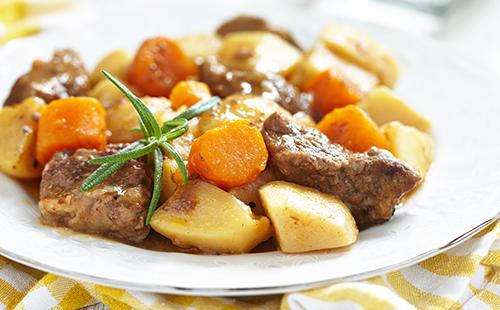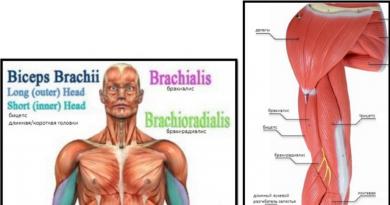Obesity is a global problem of mankind. The main reasons for its appearance are overeating and the abuse of junk food. Metabolism plays a huge role in the process of maintaining a figure and health. Gaining excess weight means a failure in metabolism, as well as the predominance of calories in the body over the process of spending them. The therapeutic diet No. 8 from Manuil Pevzner is designed to defeat obesity by eliminating its causes.
The work of a nutritionist on the compilation of special diets was not in vain. Formed in the middle of the last century, medical "tables" are successfully used by modern physicians. The set of products changes according to the expansion of opportunities in nutrition. The principles of diets remain unchanged, which ensures the effectiveness of treatment with a special diet.
A therapeutic diet will not only help to reduce weight, it will have a positive effect on metabolism, gradually bringing it back to a physiological norm. Also, the diet plan is designed to change the patient's eating habits. This will act as a guarantee of weight stability and prevent its set in the future.
For whom is the therapeutic diet No. 8 developed?
Medical Diet No. 8 is designed to help obese people. An excess of body mass index of 30 indicates excessive weight. People with a lower index can also use the rules of the diet. Important conditions for the application of this method of nutrition are:
- moderation of physical and mental stress;
- absence of concomitant diseases;
- normal state of the gastrointestinal tract.
The fact is that the diet involves the use of foods with a reduced energy value. If you eat like this with intense physical or mental stress, the patient will feel weakness and loss of strength. Also, contraindications include pathologies of the digestive tract and other organs. These conditions require compliance with special diets provided by Pevzner within the framework of other "tables".
Among other things, this nutrition system stops weight gain. People who are not obese and notice a regular increase in kilograms can use its principles. The indications of diet number 8 also include a violation of lipid metabolism. The progression of obesity for no apparent reason can speak about it.
According to doctors, the eighth diet plan allows you to normalize nutrition, taking into account energy needs. This is a healthy way to get rid of obesity without significant risk to the digestive system. The principle of operation of the selected diet is to optimize the quantity and quality of food consumed.
Weight Loss Mechanism
Dieting involves making major adjustments to the patient's eating habits. Its success depends on the unquestioning implementation of the plan, compliance with medical recommendations and the general rules of a restricted diet. The purpose of prescribing treatment table No. 8 is to force the body to burn accumulated fat deposits. This will happen under the following conditions:
- reduction in calorie intake- the lack of calories necessary for the patient's life, causes the body to take energy from fat depots;
- normalization of lipid processing- this is facilitated by a decrease in the amount of refractory fats in food and an increase in high-density lipoproteins;
- normalization of insulin levels- occurs due to the exclusion of simple carbohydrates from the diet and leads to the prevention of sharp bouts of hunger;
- correction of the volume of the stomach- is carried out using a fractional diet with a reduced volume of portions;
- improvement of lipid metabolism- leads to the efficient use of fats as an energy source, realized through the use of lipotropic substances;
- exclusion of the fact of overeating- occurs due to a decrease in appetite by correcting the taste of food and saturating it with fiber.
The diet should provide the body with the necessary amount of vitamins and minerals. Nutrients can come from the chemical composition of foods or special preparations. Otherwise, the patient will face an aggravation of metabolic disorders and general well-being.
Principles of medical weight loss
Diet number 8 (table number 8) will completely transform the way an obese person eats. The presence of a problem with weight already indicates an incorrect lifestyle of the patient. A specific approach to the diet will return it to the right track, as well as eliminate the consequences of neglecting your health.
The eighth table refers to the hyponatric. It means minimizing the amount of salt consumed. This will remove excess fluid from the body and make fat depots available for natural breakdown.
Reducing the daily amount of free fluid to 1.8 liters will reduce the load on the heart and kidneys, and will prevent drops in blood pressure. The volume of liquid should be reduced correctly:
- sweet soda- exclude completely;
- alcohol - any alcohol is strictly prohibited;
- liquid dishes - reduce the portion by half;
- tea, coffee, milk- reduce the total number of drinks to four glasses;
- pure non-carbonated water- makes up the entire remaining volume of the liquid.
The total calorie content of the diet is reduced by reducing the amount of bread and fatty foods consumed. Satiety will provide sources of dietary fiber and vitamins - fruits and vegetables. The stability of insulin levels is achieved by eliminating simple carbohydrates from the diet, as well as starchy foods.
Drink often, in small sips. Do not drink liquid before meals or immediately after a meal. This will disrupt the digestion process and reduce the efficiency of digesting nutrients.

Accelerating metabolism and reducing appetite
Compliance with the physiological norm of proteins will help speed up the metabolism and use energy in the process of digesting food. They are digested for a long time, and the process itself requires additional energy consumption from the body. The rejection of frayed, slimy and pureed dishes will have a positive effect on weight loss. All products are best cooked in pieces. Recipes with boiling, steaming, baking are used. Cooking helps to get rid of excess fat and purine compounds in meat products.
To reduce appetite and prevent overeating, you will need to minimize the use of:
- salt (up to 5 g per day);
- pepper;
- mustard;
- horseradish;
- garlic
- Luke;
- strong-smelling seasonings;
- fried foods;
- alcohol.
Refusal of alcohol is a prerequisite for losing weight - in addition to stimulating appetite, alcohol serves as a source of additional calories.
As part of a fractional diet, the patient is allowed up to six meals a day. It is important to observe equal intervals between them and restrictions on serving sizes. Food should be healthy and rational in order to prevent depletion of the body and the appearance of diseases. An important role is given to the observance of the ratio of proteins, fats and carbohydrates (BJU) in the daily diet:
- 100 g of proteins;
- 40 g vegetable fats;
- 40 g of animal fats;
- 200 g of carbohydrates.
Subject to all conditions, the calorie content of the diet will not exceed 1900 kcal. If the goal of this nutrition system is to quickly get rid of a large amount of excess weight, the calorie content can be reduced to 1200 kcal. As a rule, such strict diets are carried out in stationary conditions under the supervision of a doctor.

Food supplies for the patient
The list of what you can eat on diet number 8 includes only healthy foods. There is no place for sweets and fast food in it. How to fill the refrigerator to comply with table number 8 is described in detail in the table of products.
Table - Products and dishes for the diet table number 8
| Category | Product List | Subtleties of preparation and use |
|---|---|---|
| Bakery products | - Rye bread; - bread with bran; - protein diabetic bread | Consume no more than 150 g per day |
| Cereals and pasta | - Barley grits; - buckwheat; - barley; - durum wheat pasta | Add to soups |
| Vegetables and fruits | - All non-starchy and unsweetened vegetables; - sweet and sour fruits and berries | - Prepare all kinds of dishes from vegetables; - make fruit desserts: jelly, jelly on corn starch; - preference is given to raw vegetables and fruits; |
| Milk and eggs | - Skimmed milk; - any kind of fermented milk products; - limited amount of sour cream; - skim cheese; - 1 yolk and some whites | - Milk is used to make milk soups; - sour cream is added as a dressing for dishes; - unsweetened cheesecakes and casseroles are prepared from cottage cheese; - eggs are cooked soft-boiled; - make an omelet from proteins |
| Meat and fish products | - Rabbit meat; - turkey; - chicken without skin; - veal; - lean beef - any kind of fish; - all seafood | - Meat is consumed in a boiled piece; - fish is baked after boiling; - prepare fish cutlets and meatballs; - seafood is consumed in an amount of up to 200 g per day |
| First meal | - Soups on vegetable broth; - milk soups; - dishes on a weak fish or meat broth | - Cooked on the basis of vegetables; - allowed cereals are added in a minimum amount; - fish and meat dishes are consumed no more than twice a week; - eat half of the standard portion (recommended volume); - with severe obesity, the first courses are not consumed |
Vegetable sources of fat can be added to the list of recommended products: olive, corn and linseed oil for salad dressing. As sweeteners, it is better to use sweeteners. Sorbitol, xylitol, saccharin are suitable for adding to drinks and preparing dietary fruit desserts. From drinks, weak tea is allowed, green tea is better, as well. It will serve as a source of vitamin C for the body.
The general trend of clinical nutrition is the predominance of vegetables and dishes from them in the diet, along with dietary sources of protein. The best way to achieve satiety is a vegetable side dish or salad. Oil should be seasoned sparingly. Give preference to olive, mixing it with lemon juice.
Under the ban: what to exclude from the diet
For each diet of Manuil Pevzner, a list of excluded foods is provided. It is designed to orient the patient among the gastronomic pleasures in order to prevent the use of products that provoke obesity.
- High-calorie flour. It should include first-class bread made from wheat flour with various additives, as well as any kind of muffin.
- Sources of starch. These include all starchy cereals - semolina, rice, as well as any kind of legumes. Also provoke obesity pasta made from soft wheat varieties.
- Harmful vegetables and fruits. Potatoes and sweet vegetables - beets and carrots - can prevent the patient from "giving battle" to excess weight. For the duration of the diet, they should be excluded. Too much sugar is found in any kind of grapes, bananas, as well as in all varieties of dried fruits.
- Milk fat. For the duration of the diet, you should abandon fatty milk, cottage cheese, sour cream and cream. It is better not to add milk to drinks so as not to increase their calorie content.
- Fat meat. Pork and lamb contain refractory fats that contribute to obesity. Observing the medical "table", you should eat only dietary meat. Sausages, fish and canned meat are also considered sources of harmful calories.
The list of what you can’t eat on diet number 8 automatically includes industrial products - snacks, sauces, spicy spreads. All types of confectionery and homemade desserts - jam, jam are completely excluded. A very small amount of honey is allowed. It is better to dissolve it in a glass of warm water, intended for morning intake on an empty stomach.
Pickles and preserves are sources of large amounts of salt, so their use should also be stopped. Strong teas, coffee, and spices can stimulate the appetite. Do not drink packaged coffee drinks, cocoa, fruit juices and nectars.

Table: menu for the week
With the compilation of a healthy eating plan for one day, there are rarely problems. However, the medical diet can last a long time. People who are fighting obesity will be helped by an exemplary diet menu number 8, compiled for a week, from the following table.
Table - Weekly meal plan for diet number 8
| days | Breakfast | Dinner | Dinner |
|---|---|---|---|
| Monday | - Boiled chicken breast; - chopped cucumber | - Vegetable soup with buckwheat; - vegetable salad with boiled veal | - Vegetable stew; - a piece of boiled fish |
| Tuesday | - Vegetable salad with boiled meat; - 1 egg omelette | - Borscht in vegetable broth with a spoonful of sour cream; - stewed cabbage | - Canned stewed meat; - sliced fresh vegetables |
| Wednesday | Fresh tomato and cottage cheese salad | - Okroshka with chicken meat on whey; - stewed vegetables with veal | - Fish baked with zucchini and pepper; - vinaigrette without beans |
| Thursday | - Salad based on seafood; - boiled egg | - Soup on the second fish broth with pieces of fish; - boiled cauliflower with olive oil | - Jellied fish; - a side dish of stewed vegetables |
| Friday | - Cabbage and cucumber salad; - steam scrambled eggs | - Pickle without salt; - steamed chicken meatballs | - Omelette with ham; - tomato and pepper salad |
| Saturday (unloading day) | Curd with apple slices | Cottage cheese casserole with vegetables | Portion of cottage cheese with berries |
| Sunday | - Sauerkraut with apple under vegetable oil; - soft-boiled egg | - Borscht in chicken broth with pieces of boiled chicken; - seafood salad | - Boiled fish fried in sunflower oil; - vegetable stew |
Suitable for a snack:
- raw apples;
- low-fat cottage cheese with the addition of milk;
- cranberry jelly;
- cottage cheese pudding;
- fresh berries;
- kefir;
- cheesecakes without flour;
- citrus;
- a slice of watermelon or melon;
- apple baked with cottage cheese;
- kefir;
- apples;
- berry jelly;
- grapefruit.
To increase the effectiveness of the diet, it is recommended to carry out fasting days in compliance with a low-calorie menu - once a week is enough. The diet can be not only dairy products, but also raw or cooked vegetables, as well as fish or poultry meat. The total calorie content of meals consumed per day should not exceed 1500 kcal. The entire daily amount of food is divided into six meals.
Treatment table No. 8, like other diets of Manuel Pevzner, should be prescribed by a doctor. The specialist will discuss individual recommendations regarding the diet and its calorie content. For independent use, you can use the general principles of therapeutic weight loss. Introducing too strict restrictions without good reason is fraught with health problems, as well as exacerbation of chronic diseases.



